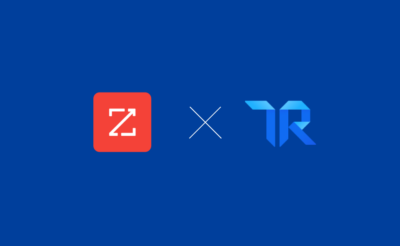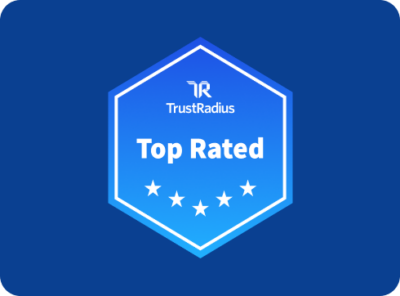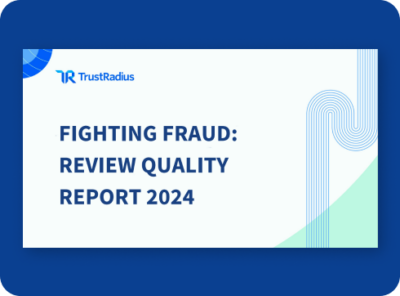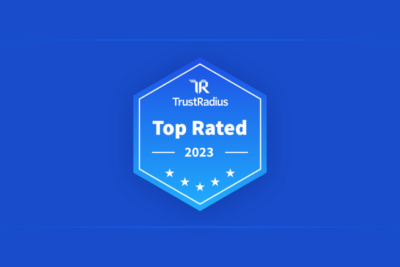Best Intent Data Sources for Customer Retention and Expansion
Marketers often first learn about using intent data for prospecting, but they should also learn about the best intent data sources for customer retention and expansion.
Aligning marketing, sales and customer success teams with downstream intent data empowers brands to nurture accounts with personalized and timely messaging, create efficient customer retention strategies and develop more personal relationships with customers and prospects.
But just like each individual buyer, each source of intent data has a unique story. Understanding your data sources is crucial for properly executing campaigns, but where should marketers start? Learn about the types of intent data sources and which ones are best for retaining, expanding, cross-selling, and up-selling existing accounts.
Types of intent data sources
First-party intent data is collected directly from an organization’s own web properties. However, many brands struggle to accurately assess this data or understand how to draw actionable insights for their sales and marketing initiatives.
Second party-intent data is acquired by partnering with another business (usually a publisher) that monetizes its own first-party data. This type of intent data is relatively new and is only available from a limited number of sources.
High-quality, second-party, downstream intent data helps brands better understand their customers to create a personal, user-friendly experience while still protecting user privacy and anonymity. There is considerable variance in intent data sources, how data is collected and the insights available, so it’s also important to understand the key differences.
Finally, third-party intent data comes from data conglomerates that purchase intent signals from various websites and model the data to monetize. This type of intent data is best for reaching a large volume of users near the top of the funnel. Because of the broad nature of the sources of third-party intent data, only a small percentage of the signals in these data sets are directly tied to users who are actively moving toward a purchase. This third-party intent data can be useful for crafting awareness messaging for prospective customers very early on in their journey, but it isn’t alway reliable for more targeted campaigns or drawing insights about your current customer base.
Customer retention requires more in-depth knowledge of bottom-of-the-funnel behavior. For example, brands might have a high-value account with an upcoming renewal. Downstream intent data indicating that the account is actively researching competitors can prove incredibly valuable. With that knowledge, brands can flag the account for potential churn and proactively engage in retention efforts.
Bottom-of-the-funnel and in-market buyers
Intent data can come from first-, second- or third-party sources, and there can be additional differences between these sources. Because second-party intent data is another publisher’s first-party data, the quality of the data is determined by the quality of the publisher’s property and the audience visiting it. Most second-party intent data comes from review sites such as TrustRadius, but it’s important to understand the data before choosing where to source it.
At TrustRadius, we refer to our second-party intent data as “downstream intent data” in part to delineate it from other second-party intent data that models in other sources. For example, G2 provides second-party intent data. However, G2 also incorporates blog and advertising traffic, which dilutes the signals so much it no longer qualifies as downstream. Our intent signals are more detailed, down-funnel and actionable for retention efforts since they are only representative of in-marketers researching your product or your competitors.
TrustRadius has over 1 million site visitors each month exploring tech solutions to help solve their problems. These users are less likely to be browsing broad categories. Instead, they’re actively trying to solve a problem. In-market buyers use TrustRadius to read in-depth, long-form content tailored to possible solutions, and brands can use insights from this behavior to help make predictions about purchase intent.
There are other key differences between second-party intent data providers. For instance, unlike TrustRadius, some providers, like G2, block information about competitors or allow vendors to pay to have buyers removed from intent data sets. Therefore, marketers see diminishing returns since they are not getting all of the intent signals their competitors receive.
TrustRadius is the only intent data provider that gives full access to category intent when providing insights on competitive research. Each source also attracts a unique audience. For example, TrustRadius’ audience tends to skew mid-market to enterprise (54%), according to TrustRadius research. Brands can capture the most market share by combining TrustRadius downstream intent data with additional sources.
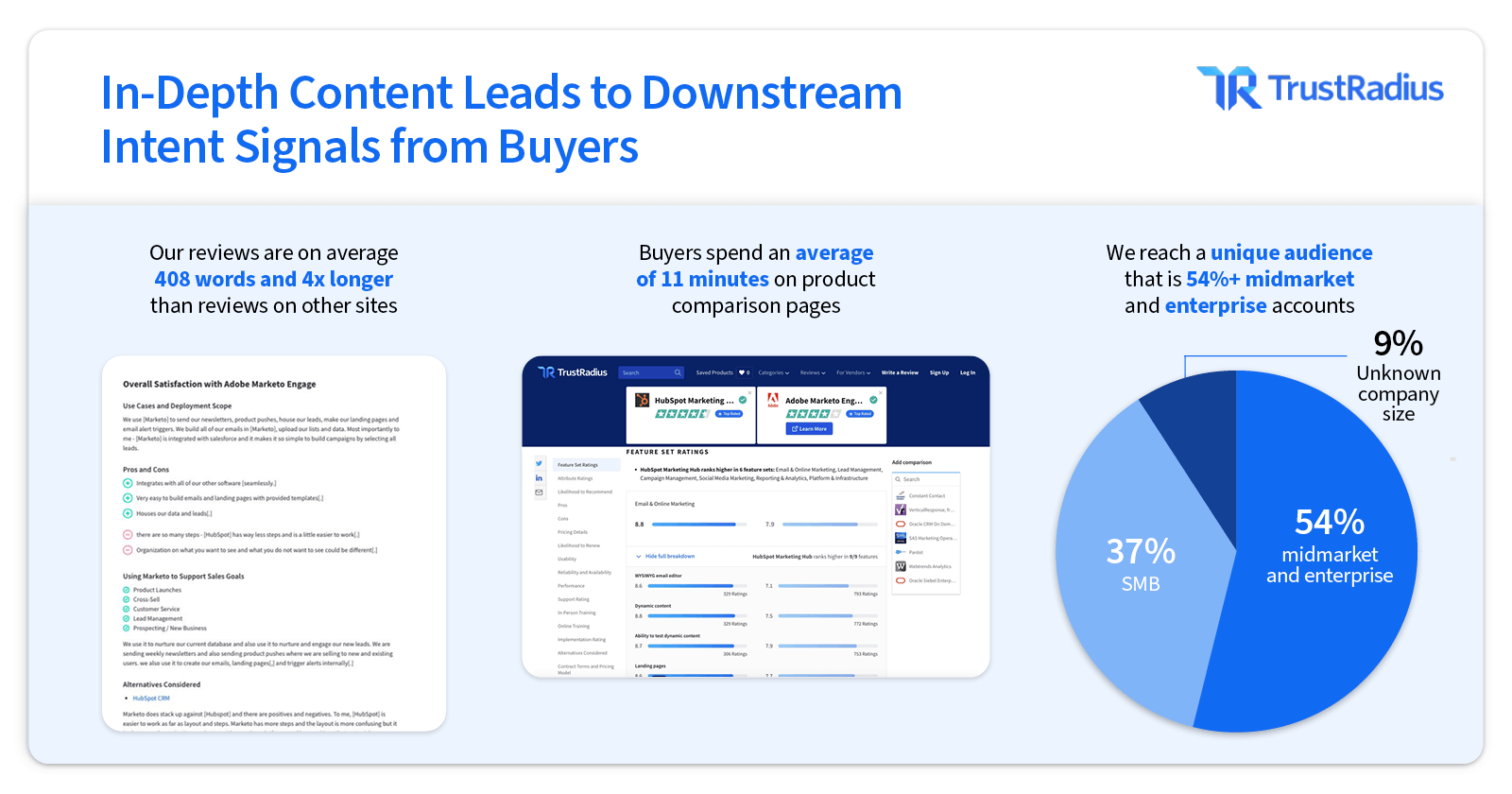
Use cases for intent data for customer retention and expansion
Most businesses have client management systems in place to monitor accounts and sales internally, but many brands are still in the dark about most consumer behavior—even after combining all available first-party customer data. By leveraging additional downstream intent data, companies can have a broader view of their customers’ journeys and challenges as well as spot retention and expansion opportunities.
Downstream intent data can be helpful in identifying opportunities to nurture and grow existing accounts, as well as highlighting accounts that are at high risk for churn. Downstream intent data can also provide some of the most valuable competitive information available, especially on users in-market and near a purchase with a competitor.
Identify churn
Trustworthy user reviews are the core of TrustRadius, so most visitors are already aware of their problems and researching solutions. Businesses can pair downstream intent data with existing account data to monitor accounts that may be reading reviews of competitors or comparing pricing. Marketing and sales teams can use these insights to build win-back or competitive takeout campaigns, reaching these accounts at a crucial moment in the buying phase.
Nurture existing customers
By focusing on specific behavioral data, brands can identify customer behavior that could signal additional opportunities for sales. As brands learn more about what users are researching, they can nurture accounts with more educational material. Alternately, brands can build customer segments based on intent data to create specific marketing plans for cross-selling and upselling customers.
For example, by using downstream intent data, a web development business discovers a customer segment that frequently visits a product page for their upgraded analytics tool after utilizing the business’s web services. This data can be used by marketing and sales teams to proactively target these users with relevant campaigns for complementary services.
Identify competitors
Additionally, intent data can be used to identify accounts that may be shopping competitors’ products or services. For example, if the same web development business looks beyond its first-party intent data, it can realize a more complete view of the buyer’s funnel.
By partnering with a downstream intent provider like TrustRadius, the business may realize that customers are also researching competitors. Marketing and sales teams can use this opportunity to present additional solutions, make special offers or create new strategies to retain these customers.
Integrate intent data with existing platforms
Successful brands leverage intent and deal intelligence throughout the sales process by activating downstream intent data across their existing CRM, ABM and advertising platforms. For example, TrustRadius integrates with Salesforce, allowing customer success teams to see when their customers are actively researching competitors.
Brands can utilize this integration for customer retention and expansion by targeting in-market segments with social proof from TrustRadius reviews and badges. Because these buyers were actively researching the product on TrustRadius, brands can know they trust TrustRadius. And, by leveraging social proof from TrustRadius, brands can further increase conversion rates.
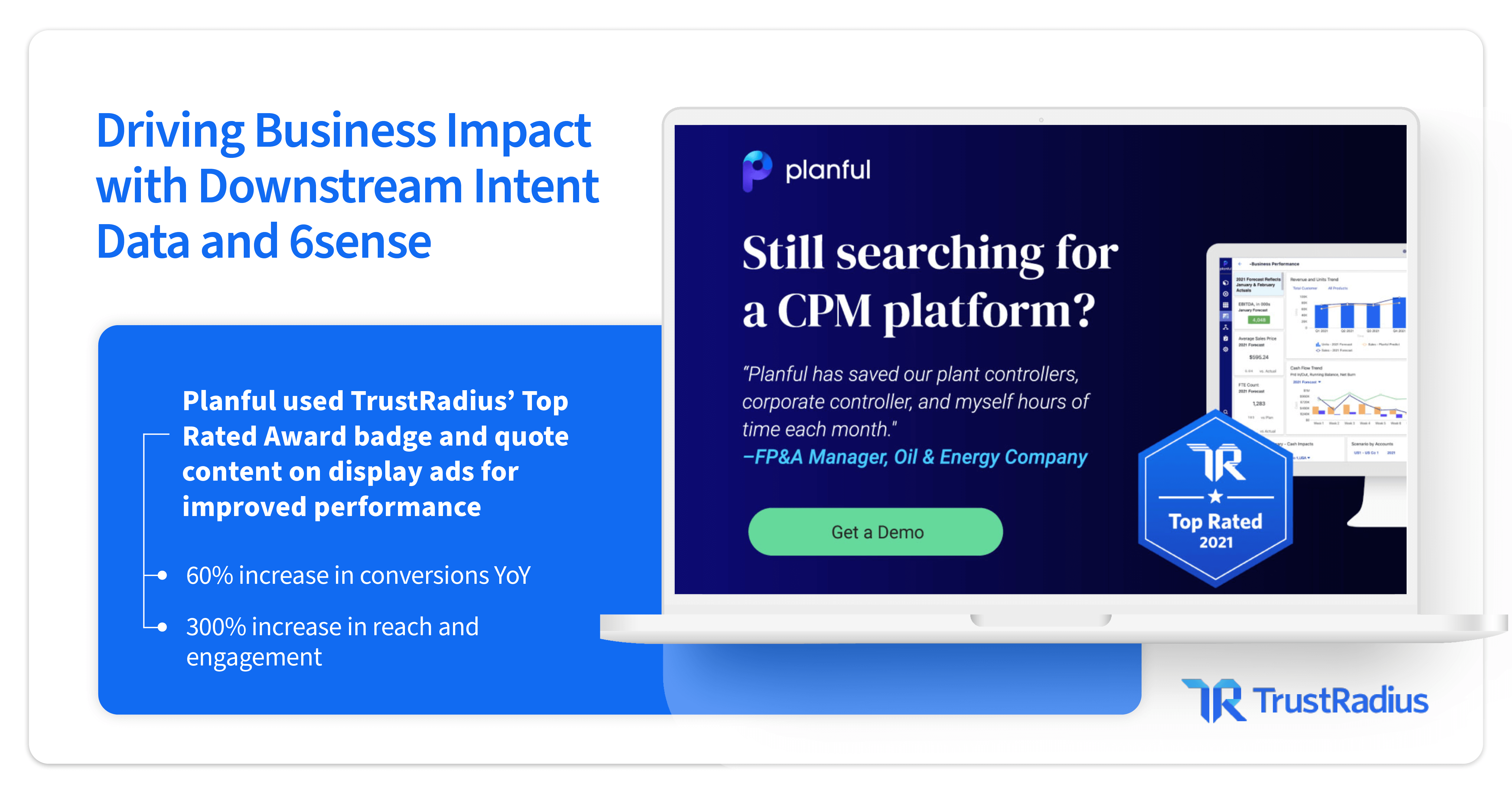
Gain insight on product purchase intent
TrustRadius offers three types of downstream intent data:
- Category intent: Not only can you see the buyers looking at your product, but you can also see the buyers looking at your category. This allows you to find those buyers who are in-market for a solution, but aren’t visiting your product pages.
- Product intent: With product intent data, brands gain access to a list of accounts of all in-market buyers exploring the brand’s products and potentially comparing with competitors. You gain access to all in-market buyers who are looking at your product, which is a larger pool of buyers than those just comparing your products to other specific products on TrustRadius.
- Product comparison data: Product comparison intent data is only available through the 6sense and Demandbase ABM platforms, where you can see accounts comparing your product against your competitors. This data is available for free for all DemandBase and 6sense customers — you can get a taste of the impact of downstream intent data.
Because these accounts are already aware of the brand’s products, they can be targeted with demo requests, free trials, and other lower-funnel offers. These accounts can also be prioritized for sales outreach and be used for sales intelligence to accelerate win rates for active deal cycles.
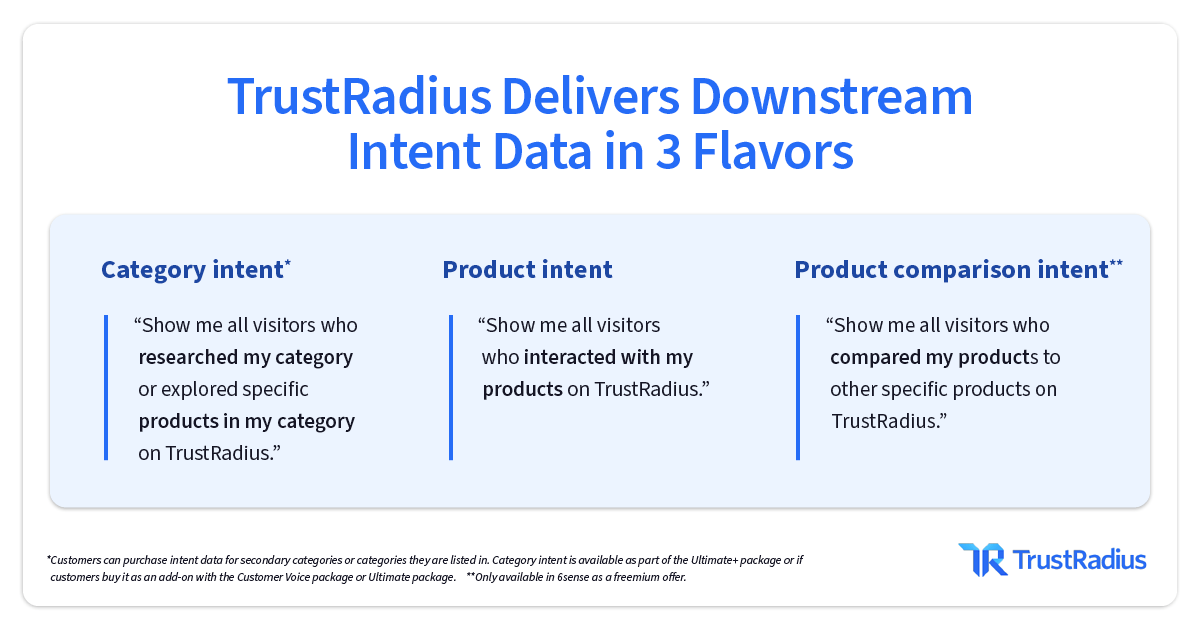
Do more with intent data sources
Intent data is more than just a prospecting tool. It’s a path to uncovering insights from customers during their journey and using that information to nurture relevant, mutually beneficial relationships based on solving a problem.
First-party intent data, where available, is a great resource for beginning to understand an existing audience. But for brands to truly scale up their efforts or gain a competitive advantage, they need the best intent data sources for customer retention and expansion. That naturally leads to partnering with a downstream intent data source like TrustRadius.
Learn more about what makes TrustRadius downstream intent data unique.
If you’re ready to find and convert more in-market buyers, contact us to learn more about what intent data can do for your customer retention and expansion efforts.
